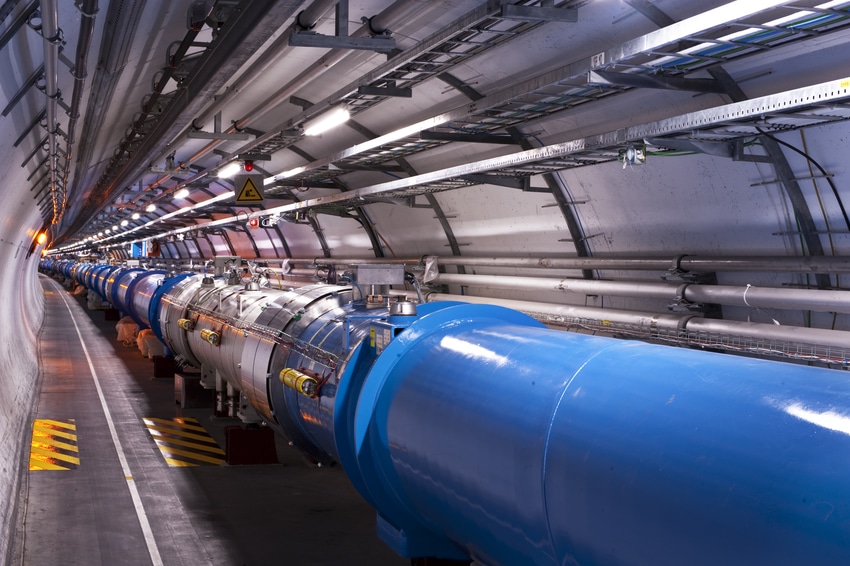The High Luminosity (HiLumi) upgrade of the Large Hadron Collider (LHC) relies, amongst other additional upgrades, on superconducting 11 T dipole magnets for increasing the luminosity of the beam to enlarge the data sample for physics experiments. The new dipole magnets are manufactured from Nb3Sn superconducting elements that become very brittle after a very specific and necessary heat treatment during the manufacturing stage.
 Views of the LHC tunnel (Source: CERN)
Views of the LHC tunnel (Source: CERN)
The microscopic superconducting elements (≈40 µm in diameter) are greatly sensitive to the stress and strain that is applied to the magnets for the final assembly and during operation within the LHC accelerator. Understanding and managing the stresses and strains originating from the macroscale down to the microscale that lead to the permanent degradation of the superconducting elements is critical to the performance of the magnets.
3D image-based modeling using Synopsys Simpleware software allows the HiLumi Project at CERN to characterize representative coil geometries to predict behavior at different scales using advanced material models. This research is enabling realistic simulations to be carried out at the strand and filament level by accounting for the global stresses of the realistic coil geometry.
Simpleware software offers a quick and intuitive environment for processing 3D image data. In this case, X-ray CT scanning was used to create a set of images of the aluminum parts, including defects. Simpleware ScanIP was used by ELEMCA to segment the component and process the data to capture important elements for simulation.
CERN use experimental testing to obtain stress-strain measurements from coil materials. However, they found it necessary to increase the detail of finite element (FE) models for simulations in order to better capture behavior based on material properties.
Simpleware software helped solve this problem by segmenting image data obtained using High-definition optical images from a coil cross-section and scanning electron microscope (SEM) images of microscopic superconducting filaments from the same coil cross-section. This method made it possible to characterize the complex internal geometry of the coils without compromising on the features of the original prototype.
The models created in Simpleware software are used by CERN in ANSYS to carry out analysis of actual stresses within the multifilament of the coil strands and cables. By using a refined mesh, CERN are able to improve the precision of measured stresses, resulting in a more accurate and valuable simulation. These results are now being fed into improving coil behavior and the long-term performance of the Large Hadron Collider at CERN.
Michael Daly of CERN commented on the importance of Simpleware software to current research:
“Simpleware ScanIP from Synopsys enabled us to analyze the complexity of the 11T dipole coils at multiple scales using 2D images from optical and scanning electron microscope images. The superconducting cables of the dipole coils have inherent deformations within them that are very difficult to reproduce using CAD models. ScanIP allowed us to visualize and capture these realistic geometries to reproduce with greater accuracy and reproducibility the permanent deformation of the coils. Once the geometries were segmented, we used the FE module from Simpleware software to produce realistic 2D finite element models to obtain stress and strain distributions within microscopic elements from forces originating from global stresses applied to the coil.”